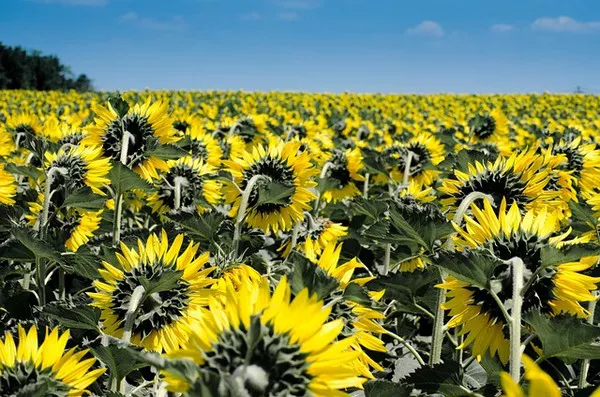As the warmth of spring envelops the land, anticipation for the vibrant hues of summer gardens builds. With longer days and rising temperatures, gardening enthusiasts are preparing to sow the seeds of their vegetable patches. While some have already initiated the process, others are patiently awaiting the optimal conditions for germination. The prevailing coolness of nighttime temperatures and soil underscores the need for patience, yet promises a flourishing garden once warmth permeates the earth. However, with the arrival of favorable conditions, another element emerges – insects.
Integrating specific flower and herb species into the garden landscape not only deters detrimental pests but also beckons beneficial insects. Here’s a look at some of the botanical stars poised to grace the summer garden:
Sunflowers: Positioned strategically in rows approximately 3 to 4 feet from vegetable crops, sunflowers serve as a natural deterrent to pests like leaf-footed bugs, safeguarding tomatoes, squash, and eggplants. Employing succession planting techniques, with a two-week interval between plantings, extends the bloom period and enhances crop protection. Additionally, these radiant blooms offer the bonus of adorning kitchen counters or dining tables in delightful bouquets.
Nasturtiums: With their trailing and bush forms, nasturtiums present a spectrum of colors, including orange, yellow, and red, when cultivated in full sun. Thriving in low-fertility environments, these easily grown annuals exhibit lush blooms when subjected to minimal fertilization. Remarkably, both the leaves and flowers are culinary delights, enhancing salads with their peppery zest.
Zinnias: A single packet of zinnia seeds promises a profusion of blooms, with these annuals self-seeding year after year. Selecting a permanent location for these versatile flowers ensures a kaleidoscope of colors, shapes, and sizes. Refraining from tilling the soil after flowering prevents disturbance of the seedbed, allowing zinnias to grace the garden until the arrival of the first frost while attracting a plethora of pollinators.
Marigolds: Esteemed for their ability to entice pollinators and deter nematodes, marigolds come in two predominant varieties: American (Tagetes erecta) and French (Tagetes patula). The towering stature of American marigolds, boasting double-petaled blooms, contrasts with the compact size and single flowers of French marigolds. Both variants, available in an array of vibrant hues, flourish from seeds or transplants, with the latter preferred for instant color gratification.
Basil: Beyond its culinary applications, basil’s delicate flowers beckon pollinators, while its foliage provides sanctuary for beneficial predatory insects. With an assortment of basil varieties, each offering distinct fragrances and culinary nuances, the garden gains dimension and flavor. Whether it’s the citrusy aroma of lemon basil, the spicy notes of cinnamon basil, or the purple allure of Thai basil, this herb adds depth to any garden. Moreover, allowing basil to flower and seed ensures a bountiful return in subsequent years, or facilitates seed-saving for future harvests.
As spring transitions into summer, these floral companions promise to transform gardens into vibrant sanctuaries, not only enhancing aesthetics but also nurturing the ecosystem within.


